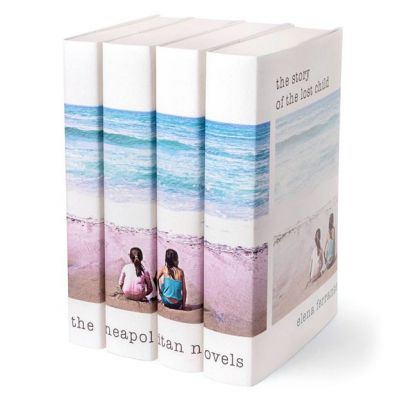“The Neapolitan Quartet” is a set of novels to which many Americans have been introduced through the HBO series, “My Brilliant Friend”. While the television series does an excellent job of capturing the essence of the books and is well worth the watching, there is nothing that can compare to actually reading Elana Ferrante’s words. I devoured these books, not hesitating in going immediately from one to the next, as if each book were merely chapters of one complete work, which they were. Ferrante has described them as “a single novel” published in four volumes due to length and duration. They are like the “Lord of the Rings” Trilogy, one story across multiple books.
The four books in the quartet are; “My Brilliant Friend” (2012), “The Story of a New Name” (2013), “Those Who Leave and Those Who Stay” (2014), and “The story of the Lost Child” (2015). But do not let the length frighten you. They are a quick, easy, yet substantive read. The story follows the lives of two women, Elena Greco and Raffaella Cerullo, starting with their childhood in a poor neighborhood near Napoli. It describes not only the challenges they face to make a life for themselves but how some seemingly minor decisions change their life’s trajectory. Beyond the interpersonal conflicts, Farrenta captures two working-class people striving to better themselves and how those personal interactions impact those objectives. It would be easy to write the quartet off as a chick book, to use a crass term. But they are so much more than that. They are an important description of life in Italy in the latter half of the 20th century.
In part, what makes these books so powerful is the anonymity of the author, Elena Ferrante. No one knows who she is. I am not even sure if her publisher even knows. Although some have speculated that she may not even be a she but a man posing as a woman, from the writing, I find this hard to believe. Being unknown gives her the freedom to write authentically, to write her truth without self-censorship. By being unknown, she can write about friendship, loyalty, family, sex, marriage, and fidelity from a woman’s perspective without others speculating what came from her life and what came from her imagination. Far too often, today’s warriors of righteousness make the author the focus, not their work. This cannot happen with Farrante. The creator of this art is merely a name on a book cover. We know nothing more.
Farrente is very straightforward in discussing some of the above mentioned subjects, but this is not a salacious work. It is genuine, which is what makes the story so powerful and so important to Italians and Italian Americans. Before visiting Italy, even though I am of Italian ancestry, I believed in the mythical Italy portrayed in films made by medigahn writers and producers. The Italy, where everyone was happy, drinking wine and dancing the tarantella all night. I was unaware of the struggle many faced to survive. In my mind, Italy was all lush rolling Tuscan hills bathed in sunshine while the cities were nothing more than cute little shops on quaint cobblestone streets. Farrante’s novels correct this misconception. Through her writing, we clearly see the world of the Italian working class; sexism, the class distinctions and prejudices, and the criminals both petty and major.
Two things stood out to me. The first was not only the acceptance of domestic violence but also how the women in the community openly supported it. A husband who disciplined his wife was a true man running his household as God intended. The second was how success separated the characters. Childhood friends that did not go on to educate themselves or find a path out of the lower classes became distant from those who did. Despite their shared upbringing, people from the old neighborhood and those who went on became strangers. It is something I have seen played out multiple times.
As I mentioned above, writing this off as a soap opera would be a mistake. It would also be a mistake for men to dismiss the work as women’s literature. First, if anyone should read women’s literature, it should be men. Through such works, we can better understand the world from a perspective other than our own, which is the very point of literature. Farrante’s work is also essential in gaining a more authentic picture of life in Italy. Beyond what we can learn, it is just a fun read.



